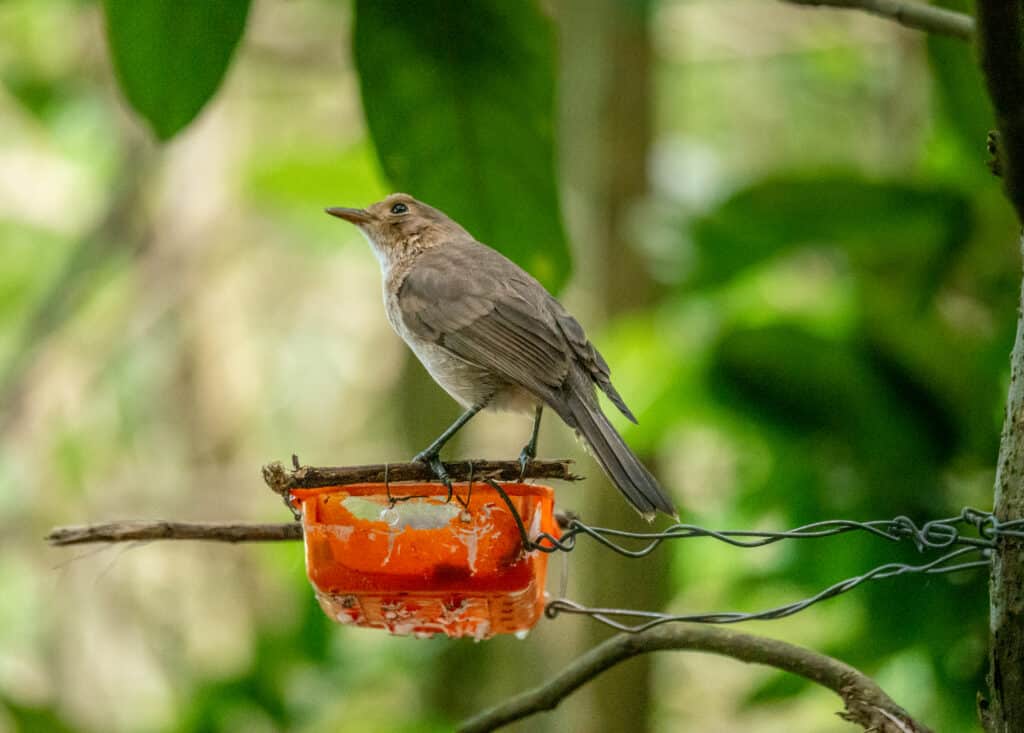
How does it feel to look a bird in the eye and know that the entire species would have gone extinct without your help? As Thomas Ghestemme puts some mealworms onto a feeding station, a young Fatu Hiva Monarch tilts its head inquisitively, looks at him and takes the food. Watching the bird flutter off, Ghestemme’s eyes show a mix of emotions: relief, fascination and hope. However, his frown also betrays deep concern. For Ghestemme and his Polynesian colleagues, contemplating a species’ existence when out in the field is a regular occurrence rather than an emotional experience.
Not once – but twice – would this Critically Endangered flycatcher have disappeared from the face of the planet were it not for a handful of people working for, and with, SOP Manu (BirdLife in French Polynesia). In 2008, when SOP Manu started work on Fatu Hiva – an extremely remote French Polynesian island of the Marquesas archipelago in the South Pacific – there were only two fertile pairs left of the entire species. After some successes with their initial work, the population later decreased again to just three fertile pairs in 2015.
Today, Fatu Hiva Monarch is still one of the rarest of the rare, numbering a mere 18 birds (of which only four are females). The species is on the brink of oblivion again. One of these 18 is the first ever to take supplementary food – the fledgling, born in 2022, took only 10 days to learn to use the station. Reflecting on that moment, Ghestemme says he cannot be sentimental: “We don’t think about the past. You have to be strong. We just give everything we have, all the energy possible. We won’t stop until the last female.”
It was only 40 years ago that Fatu Hiva Monarch was abundant in the 15-km-long island’s native forest, and its smaller range now (29 ha) is just 1.5 km from a Marquesan village. “Monarchs are certainly not shy. Nearly everyone over 50 years old has a story relating to a monarch in their garden,” says Ghestemme, “but the younger generation may not have even seen one.”
Fatu Hiva Monarch’s population has crashed since Black Rats arrived on ships in recent decades and quickly began raiding nests. This is sadly a familiar story across Pacific islands and for the Pomarea genus of monarch flycatchers to which the species belongs [see map]: of the nine species, three (and likely a fourth) went extinct in the last century.
For Fatu Hiva Monarch – a long-lived species that lays just one egg per clutch – the impact of rats was compounded by predation by feral cats (introduced perhaps a century ago but boomed when the rats arrived). Most recently, SOP Manu made the heart-breaking discovery of avian malaria in a dead monarch. If we don’t act immediately, this natural avian monarchy will be usurped, leaving their beautiful island kingdoms to waste in the hands of the invaders.
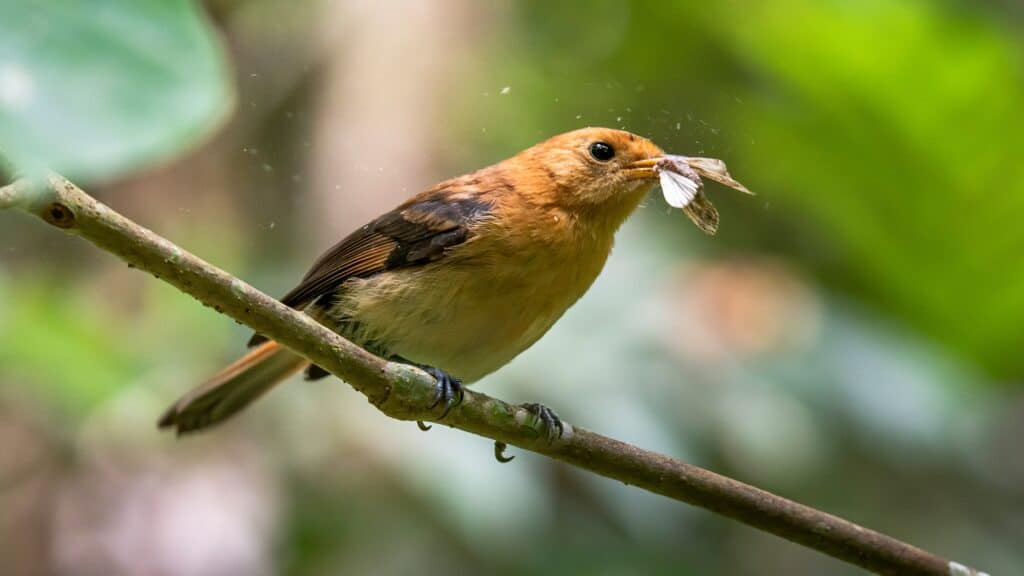
Juvenile Tahiti Monarch with a moth it has caught, although the species also feeds on seeds © Alain Petit
DEFENDING THE CROWN
The situation may seem dire from the outside, but SOP Manu is quietly confident and hopeful; it has extensive experience saving Pacific birds from extinction. Tahiti Monarch, for example, was down to a meagre 19 birds on Tahiti in 1998 and some scientists had said that it would be too late to save them. These final survivors had to contend with not one but nine introduced and invasive species including rats, cats, ants, non-native plants and birds (Common Myna, Red-vented Bulbul and Swamp Harrier).
But SOP Manu never gave up. Indeed, in the early days, Caroline Blanvillain, SOP Manu’s Land Bird Programme Manager, paid for rat bait out of her own pocket. A labour of love turned into a full programme of conservation action involving many local volunteers. Today, after extensive nest monitoring, predator control and native vegetation restoration, Tahiti Monarch – while still Critically Endangered – breeds relatively safely and numbers over 120 birds. SOP Manu is now planning a translocation to increase the population into new territories. Promisingly, studies have also shown that birds are more resistant than mammals to the genetic bottlenecks caused by tiny populations.
“The story of the ‘Ōmāma’o [Tahiti Monarch] – and of Kākerōri [Rarotonga Monarch] – provides evidence that sustainable recovery for all of the monarch flycatchers is possible,” says Steve Cranwell, BirdLife’s Invasive Species Programme Manager. Indeed this other endemic monarch, found on Rarotonga in the Cook Islands, reached a low point of 29 birds in 1989 but has since been downlisted to Vulnerable on the Red List. “Rarotonga Monarch responded brilliantly to the removal of Black Rats from a 150 ha plot of land,” says Mark O’Brien, BirdLife’s Pacific Region Programme Co-ordinator. “No fences, just regular rat control within the Takitumu Conservation Area and good quality native forest. A second insurance population of the monarch was established on the island of Atiu – where there are no Black Rats – with no special measures required. A lot of lessons were learned from Ed Saul’s sterling work.”
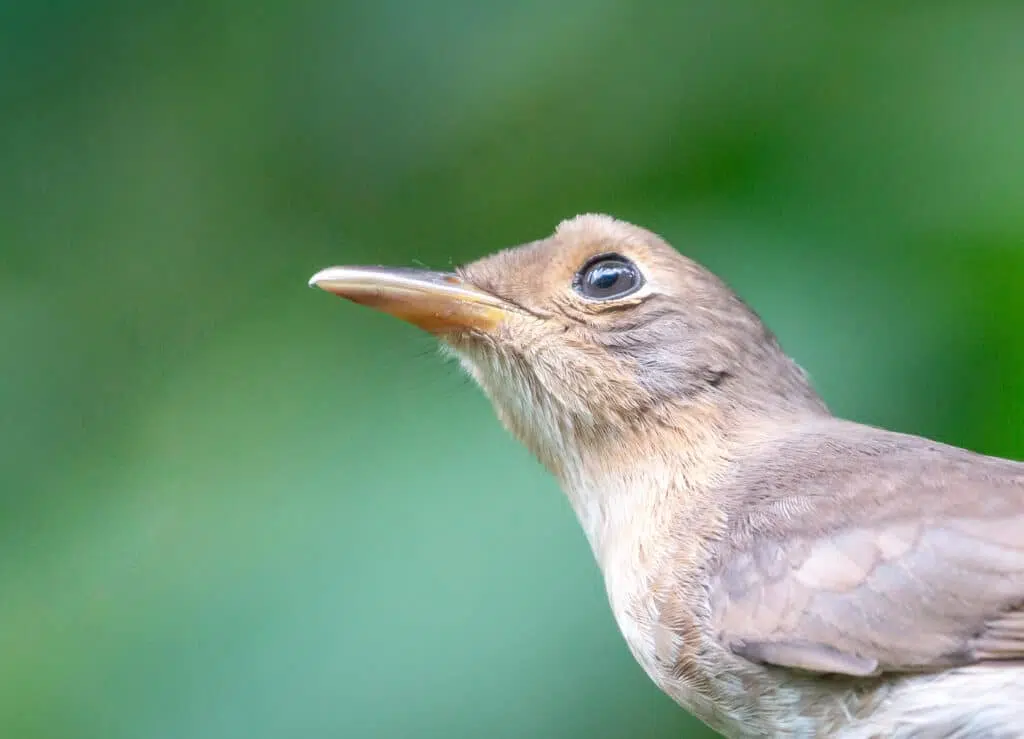
One of the rarest birds in the world, yet Fatu Hiva Monarch is not camera shy © Benjamin Ignace
CRITICAL SITUATION
SOP Manu has been dealing with invasive species in a 600ha area of forest on Fatu Hiva since 2008, including the trapping and neutering of rats and feral cats (a VHF/satellite network informs them when a cat trap is sprung). As on Rarotonga, this worked brilliantly at improving nesting success – and no nest predation by rats has been documented in over 10 years.
However, the boom in feral cats meant that hardly any young fledglings were making it to adulthood to boost the species’ numbers – they’re so inquisitive that they actually approach cats on the ground. Since 2019, the team were able to increase the survival of young monarchs in the first two months after fledging to 100 per cent, but none survived to the age of one year. Then, in 2020 and 2021, only four out of 13 fledglings survived more than two months after leaving the nest (with disease possibly a cause).
It’s not fair to call the species naïve, however, as it never evolved natural defences to mammalian predators due to its ancient history of island isolation. SOP Manu has also taken advantage of the species’ curiosity, using shiny CDs, ping-pong balls and decoy birds near camera traps to document the monarch’s dispersal. Sixty cameras distributed across 350 ha discovered that young birds (especially females) are trying to fly beyond their predator-controlled haven.
“We need to increase and intensify the management area to secure a larger area for the young birds,” says Maria Igual, one of two biologists that spend eight months per year on the island. The correlation between SOP Manu’s invasive species control and the monarch population is stark – and this ultimately correlates with the funding it receives for its work. More money means more conservation and ultimately more Fatu Hiva Monarchs. But it’s not as simple as on Rarotonga, with the threat of avian malaria complicating things somewhat, leaving SOP Manu pleading desperately for help before it is too late. “The team is struggling to sleep at the moment, knowing the critical state of the species,” says Igual.
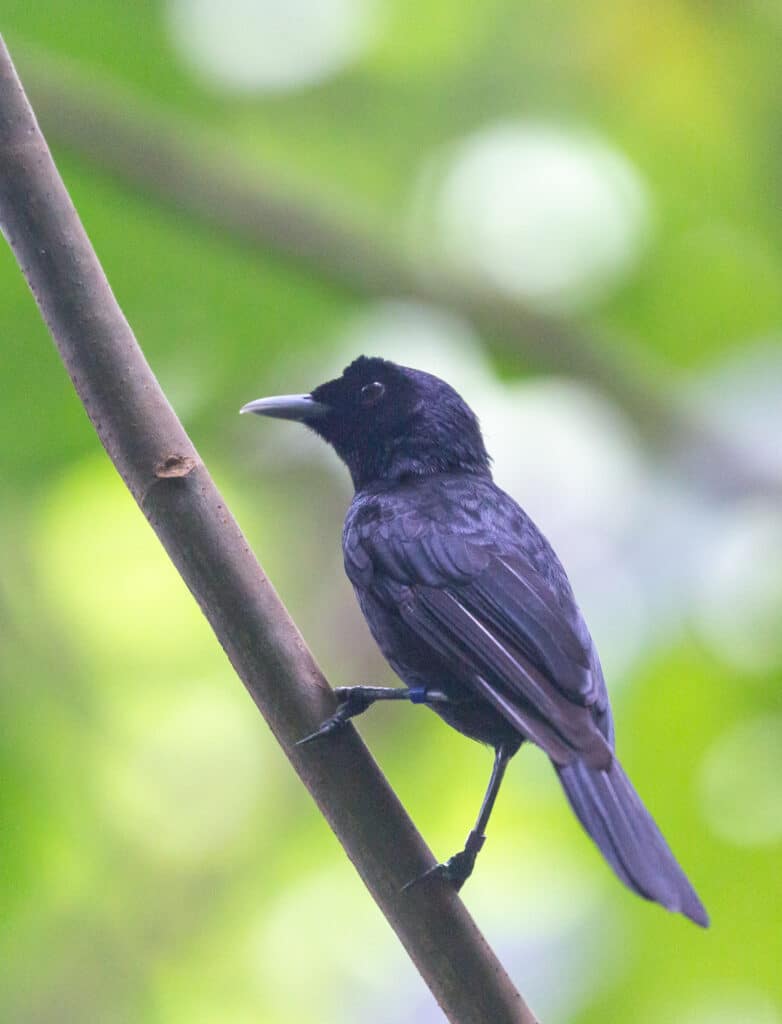
An adult Fatu Hiva Monarch perched on a branch © Benjamin Ignace
FIGHTING BACK
It’s sadly ironic that a bird specialising in catching flying insects is being pushed to its very limits by a disease carried by mosquitos. What’s worse is the avian malaria within this last monarch population was most likely caught from yet another introduced species – probably Chestnut-breasted Mannikin from Australia. Nevertheless, as Ghestemme says, there’s no point dwelling on the past – at least he now knows what was causing mysterious non-predated deaths of monarchs. Now the team wants to dial up new areas of conservation to ensure the bird’s future: disease protection and captive rearing.
The defence of the monarchy from avian malaria has already begun on two fronts: scientific research and practical action. Identifying the vector for the disease and engaging genetic sequencing labs to identify the strain of malaria is vital for finding ways of reducing vector distribution. In the longer term, a programme to release sterile mosquitos carrying Wolbachia bacteria may be the only solution to reduce the impact of malaria. The supplementary feeding is also a ploy to improve fledglings’ chances of beating the disease.
Out in the forest, stagnant water breeds mosquitos so the team has manually cleared over three tonnes of water-holding coconut shells from the ground (mostly eaten by the rats – also reducing local coconut growers’ harvests). SOP Manu has also experimented with different mixes of water to see which best attracts the mosquitos – it’s the stinkiest, apparently – and is now using this rank ‘recipe’ as a lure in specialised mosquito traps that have been hung beside monarch nests.
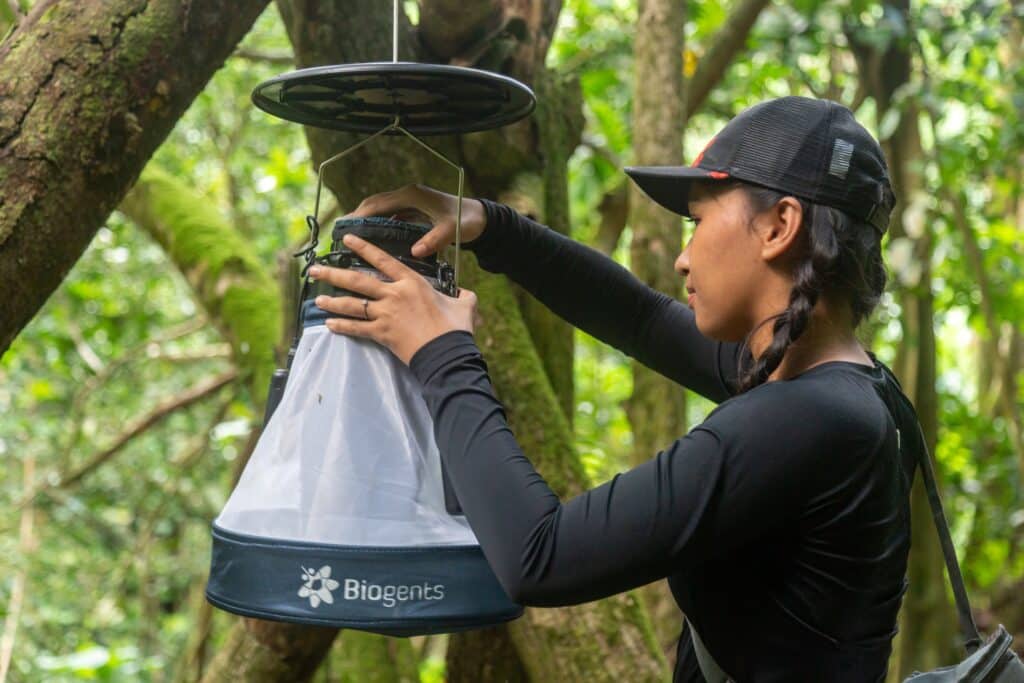
Mosquito specialist preparing a trap for identifying whichmosquito species carry avian malaria © Benjamin Ignace
With a combination of continuous, intensive predator control, a decreased mosquito concentration around nests, staff training for malaria sampling, supplementary feeding and future malaria treatment, Fatu Hiva Monarch will have a much better chance of avoiding extinction. Promisingly, there are early signs these measures are having an effect, with four of the seven Fatu Hiva Monarchs born in 2022 having successfully fledged.
But to guarantee recovery and to safeguard against catastrophe, SOP Manu needs to embark on a captive-rearing programme. This involves the hand-rearing of chicks from eggs taken from accessible nests (which also means a monarch will lay a second egg), and the development of birds in mosquito-netted aviaries before they are released back into the wild or, if required, progess to captive breeding. It’s a necessary last resort: “On Hawai’i, the decision to bring the Po’ouli into captivity was started too late and this black-faced honeycreeper was declared extinct in 2019,” says Igual. “It’s not too late for our monarch. We must not fail.”
Captive management on Fatu Hiva will be a first for French Polynesia, and SOP Manu has great links with experts from Auckland Zoo, Hawai’i and within the BirdLife Partnership – the Mauritian Wildlife Foundation has famously saved several species from extinction with this demanding technique. Inaccessible monarch nests will still produce young and allow the testing of solutions against malaria in the wild.
And that feeling of looking a bird in the eye and knowing that the entire species would have gone extinct without your help? This is something you yourself can experience too by staring at the birds in the photos in this article. The only reason people like Thomas Ghestemme and the local team can do their work is because of the support of people like you. When asked what gives him hope, he says: “That juvenile monarch using the feeder – it gives us hope that this can work. Everyone we’ve spoken to, including several zoos and other captive management experts, think it’s still very possible. We won’t give up. We just need the money, now.”
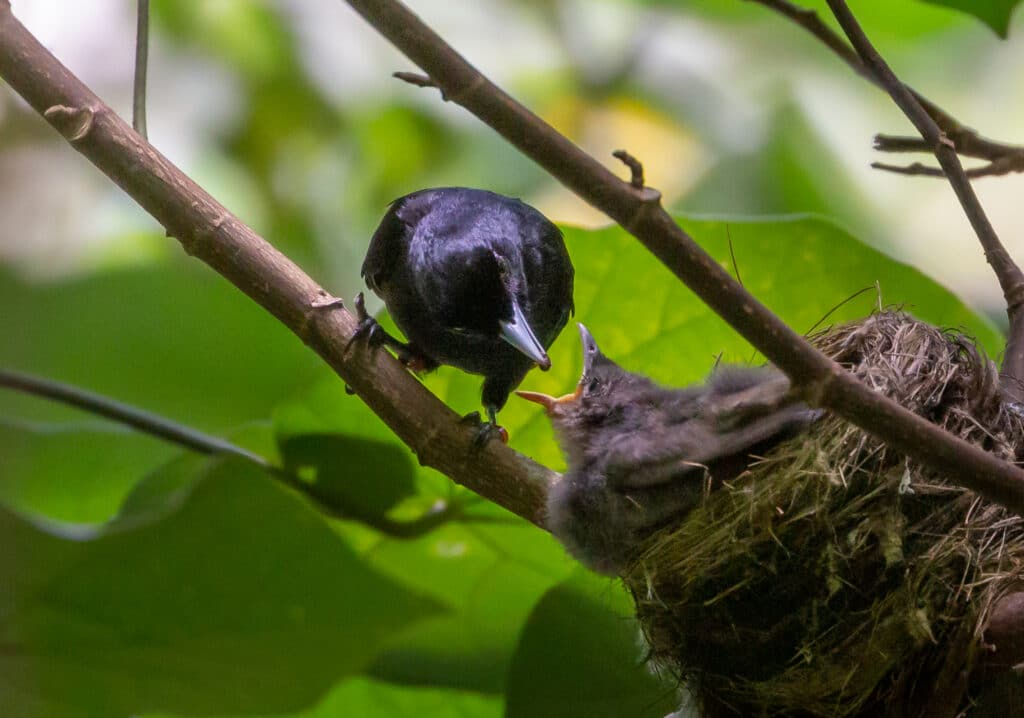
Adult Fatu Hiva Monarch feeding its chick – it’s not too late to save the species © Benjamin Ignace
‘OMA’O KE’EKE’E CÓ Ý NGHĨA GÌ ĐỐI VỚI NGƯỜI DÂN ĐỊA PHƯƠNG?
Mối liên hệ với thiên nhiên rất mạnh mẽ trong văn hóa Polynesian, và đối với một số người Marquesans lớn tuổi, Vua Fatu Hiva màu sẫm được coi là một sứ giả có thể bảo vệ con người khỏi những điều xấu. Ghestemme nói: “Một người đàn ông nói với tôi rằng 40 năm trước, anh ấy đã ra ngoài bờ biển và nghe thấy tiếng gọi của quốc vương. “Khi nó hát, anh ấy nghe thấy một số từ trong tiếng Marquesan, nói rằng ‘Về nhà đi!’ Một cơn sóng thần tấn công hòn đảo ngay sau đó.”
SOP Manu đã đầu tư rất nhiều thời gian để thu hút cộng đồng Marquesan trên Fatu Hiva. Ban đầu, họ nghi ngờ về ý định của nhóm nhưng nhanh chóng chấp nhận nguyên nhân. Họ thậm chí còn do dự về bất kỳ hành động bảo tồn nào để chuyển loài này sang một hòn đảo khác không có động vật ăn thịt, vì họ coi bướm vua là ‘chim của họ’. Để tiêu diệt những kẻ săn mồi xâm lấn từ toàn bộ
Fatu Hiva là mục tiêu dài hạn của SOP Manu, nhưng Ghestemme tin rằng mọi người sẽ đồng tình với nỗ lực này – nhất là vì SOP Manu là nhà tuyển dụng tư nhân đầu tiên trên đảo, thuê bốn người dân địa phương làm việc toàn thời gian trong lĩnh vực xâm lấn. quản lý loài.
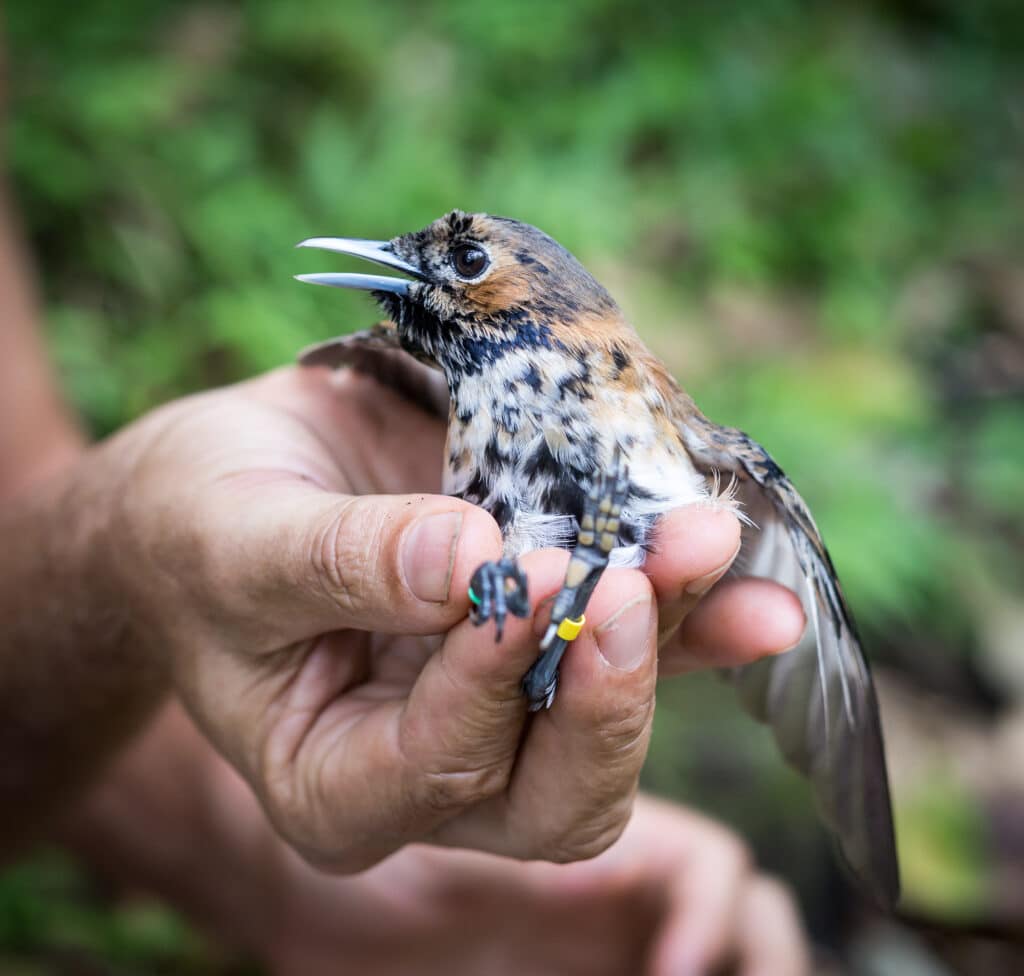
source: https://www.birdlife.org








